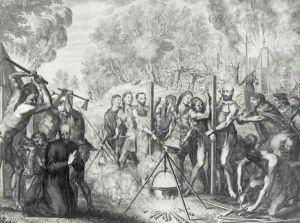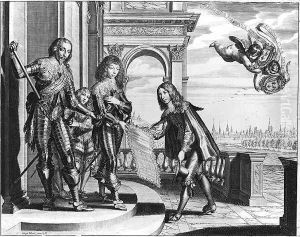Gregoire Huret Paintings
Grégoire Huret was a French engraver and draughtsman, born in 1606. He was primarily active during the 17th century, a period that was marked by significant developments in the arts in Europe, known as the Baroque era. Huret's work is characterized by its fine detail and the classical influence typical of the period, and he was known especially for his mastery in the art of engraving.
Huret worked in Lyon and later in Paris, which were both centers of artistic activity in France at the time. He was part of the milieu that included some of the most prominent artists, patrons, and intellectuals of his day. Although Huret is not as widely known today as some of his contemporaries, his work was highly esteemed by his peers and collectors during his lifetime.
Throughout his career, Grégoire Huret created a variety of works, including portraits, religious subjects, and illustrations for books. He was especially adept at creating engravings after other artists' paintings, thus contributing to the dissemination of the styles and aesthetic values of his time. His engravings were known for their clarity and precision, which allowed the subtleties of the original paintings to be appreciated in printed form.
Huret's work was also influenced by the Counter-Reformation, which sought to use art in a didactic manner to communicate religious ideas and inspire devotion among the faithful. His religious engravings served as visual tools for contemplation and education, embodying the spiritual and emotional intensity that the Counter-Reformation church wanted to convey.
Grégoire Huret passed away in 1670. Though he may not be a household name, his contributions to the art of engraving continue to be recognized by art historians and collectors. His prints remain valuable for their technical proficiency and for their role in reflecting the artistic and cultural trends of the Baroque period.

